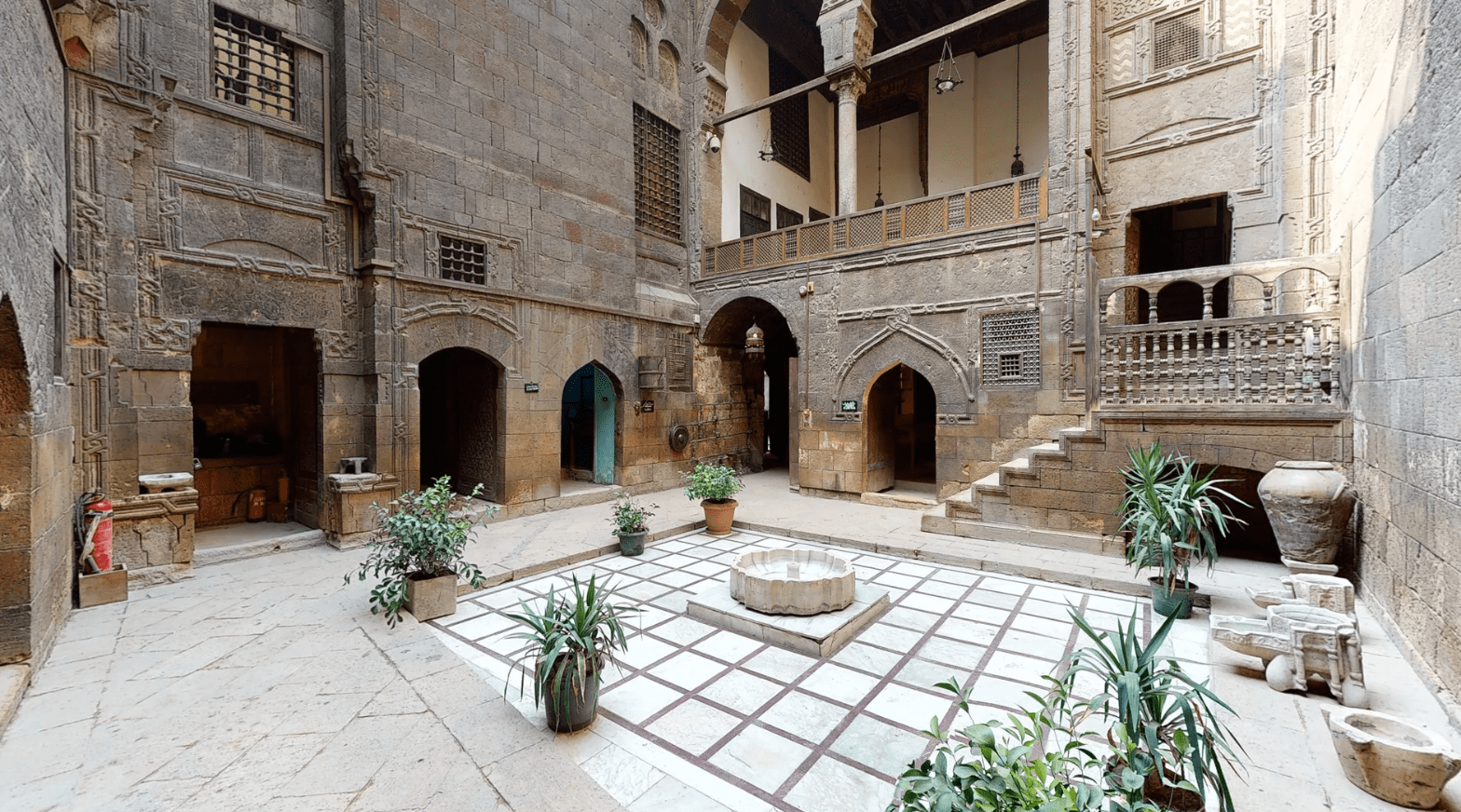Mashrabiyas sweep light across square halls, the corridors linking each room embellished with fine detailing and glassed artifacts. A vertical staircase is the spine of the estate, branching out into a high ceiling more akin to wooden skies than canopies. A film crew sits in the courtyard, by the fountain, and they murmur Gayer-Anderson in soft, accented Arabic. The museum is silent otherwise. The Gayer-Anderson Museum, also known as Beit al-Krittliya (House of the Cretan Lady), is a niche spot, tucked in the downtrodden avenues of the Sayeda Zeinab district. Graffiti welcomes visitors, and men in jalabiyas (traditional Egyptian dress) offer kindness with a guiding hand. On the outside, it is little more than a function of two medieval Ottoman houses: arabesque domes and sanded stone, Islamic architecture at its most domestic. On the inside, the museum becomes a world unto itself, packed with artifacts dating millennia from across the globe. Adjacent to the medieval beauty that is the Mosque of Ibn Tulun, the whole area dates back to the Mamlūk period of Ottoman history. The twin houses, now known as the Gayer-Anderson Museum, were believed to have been built…
From Beijing to al-Sayeda Zeinab: How the Gayer-Anderson Museum Curated World History
June 17, 2022




